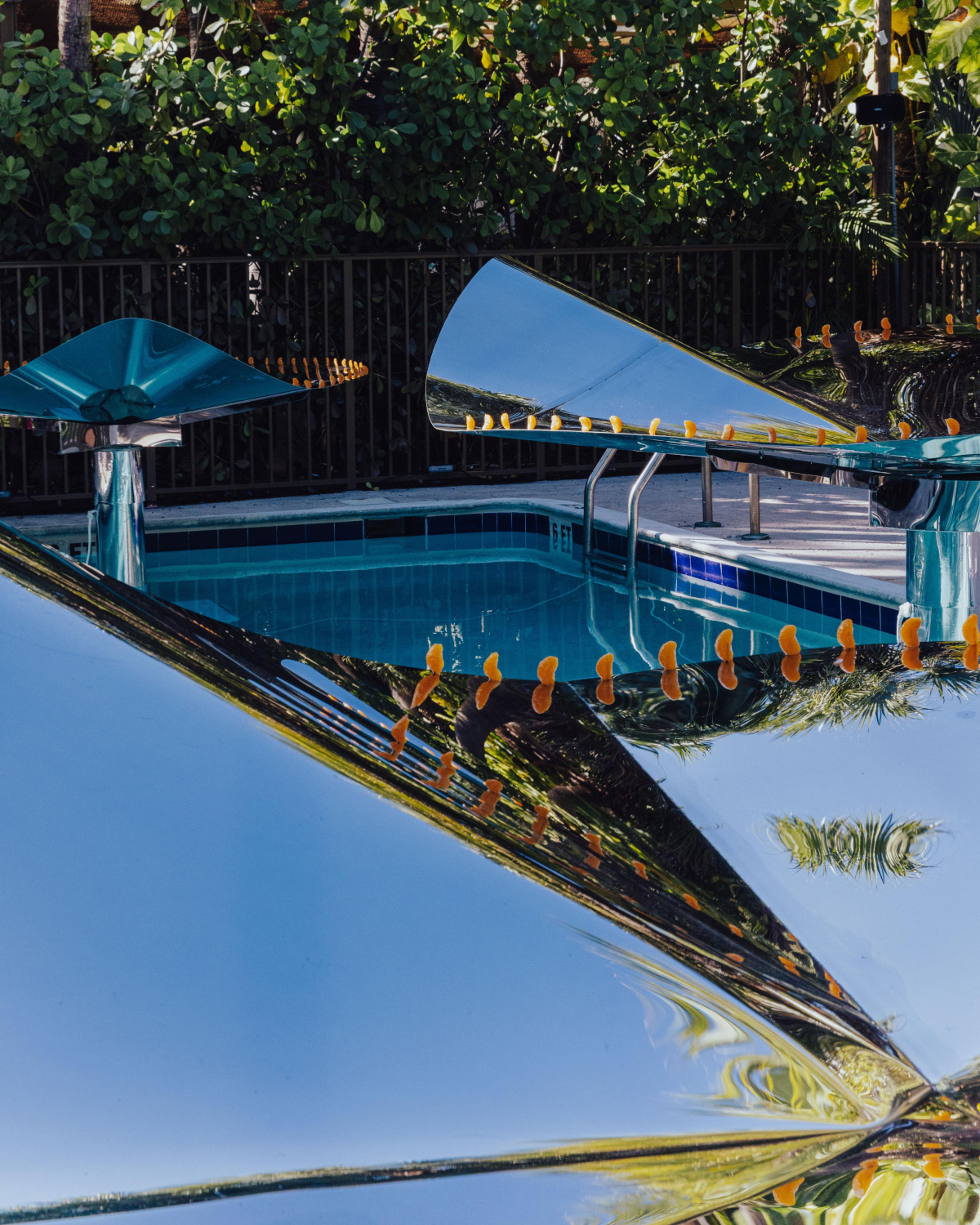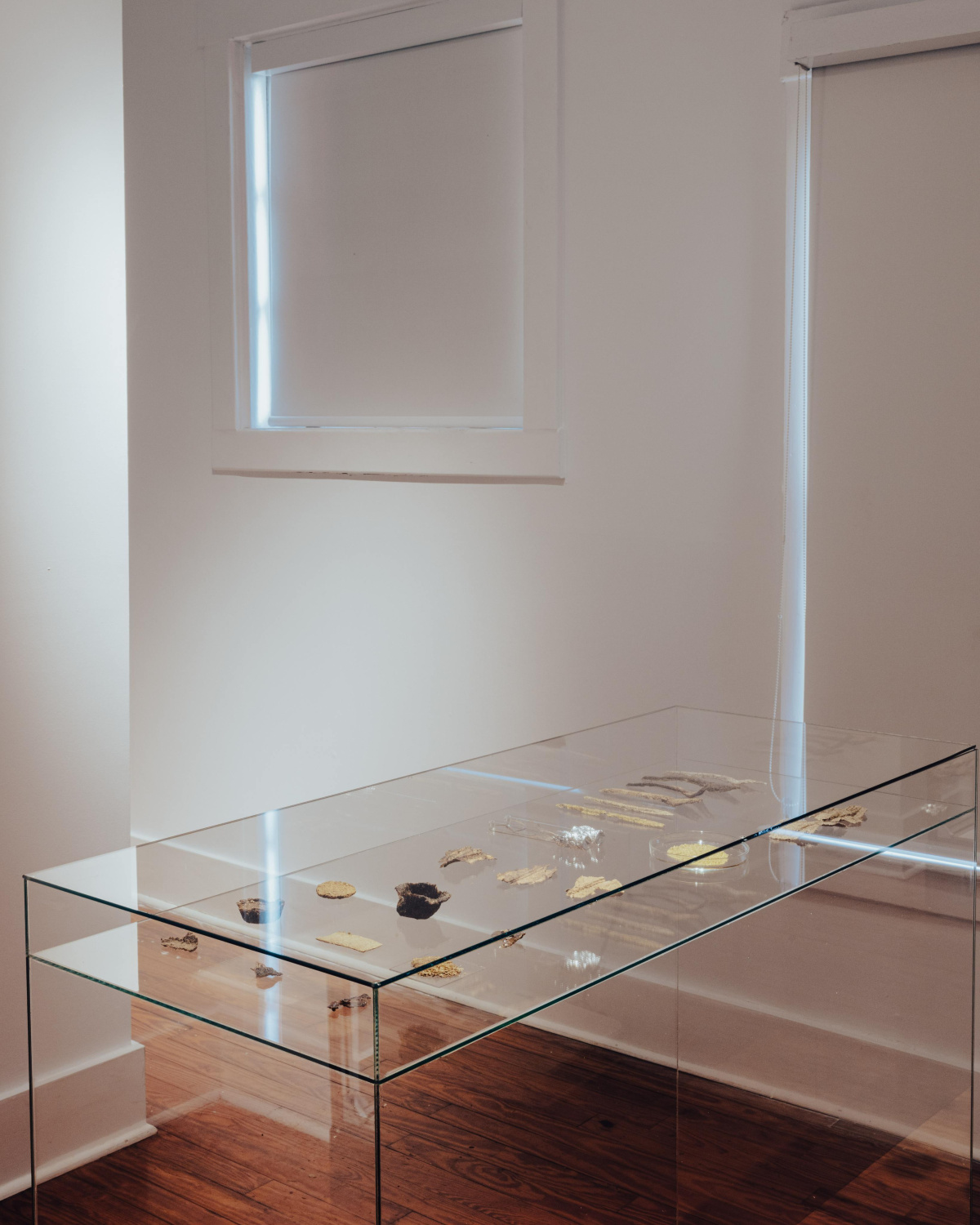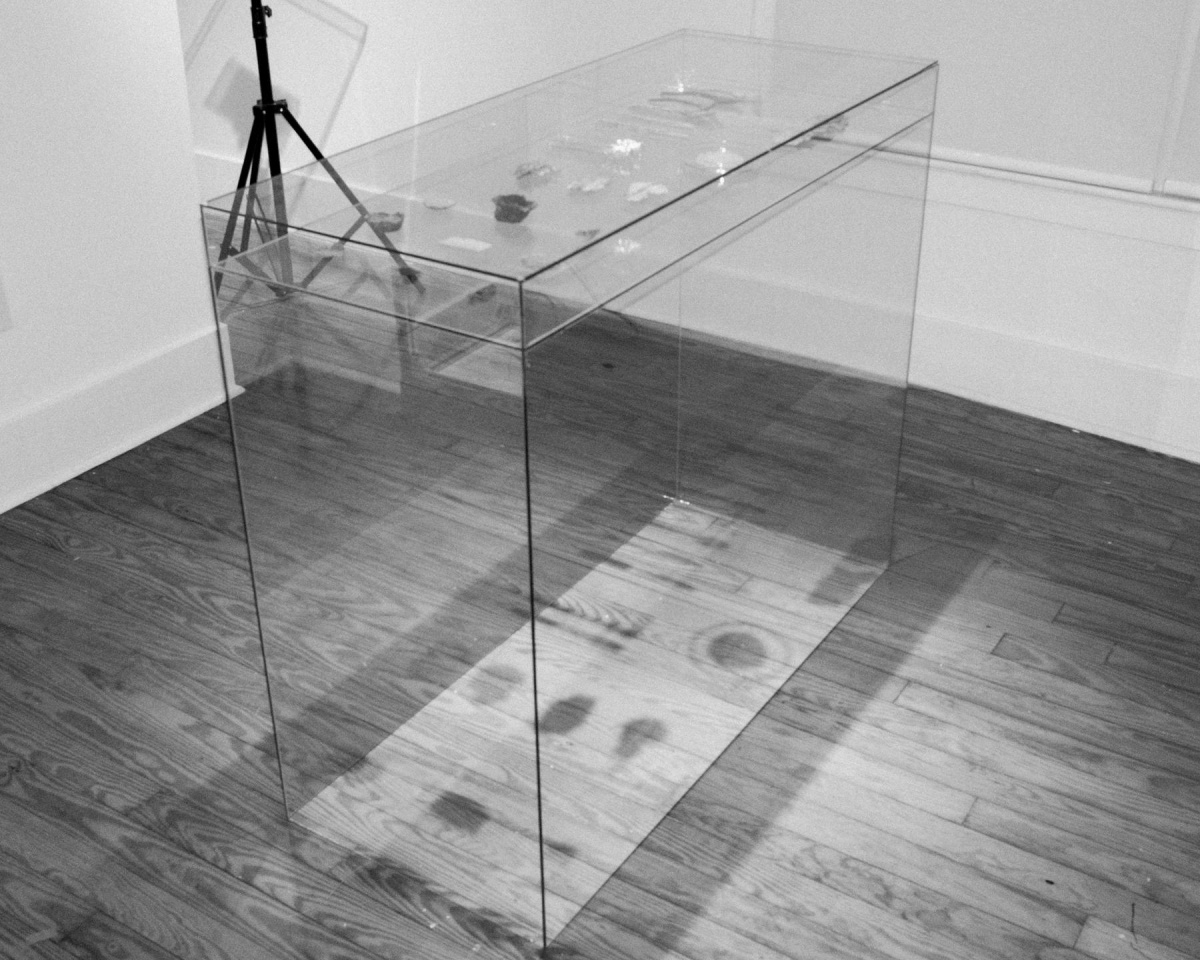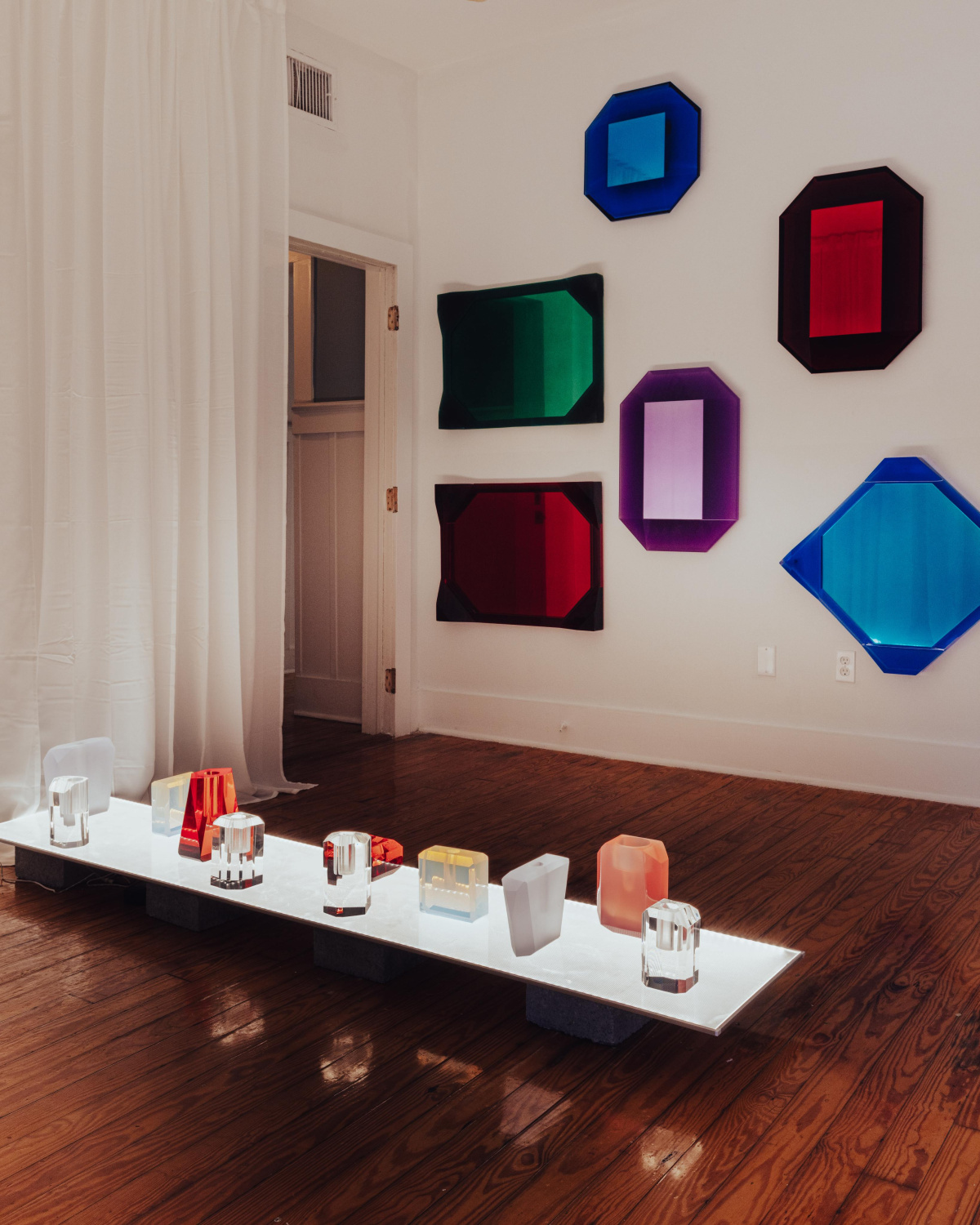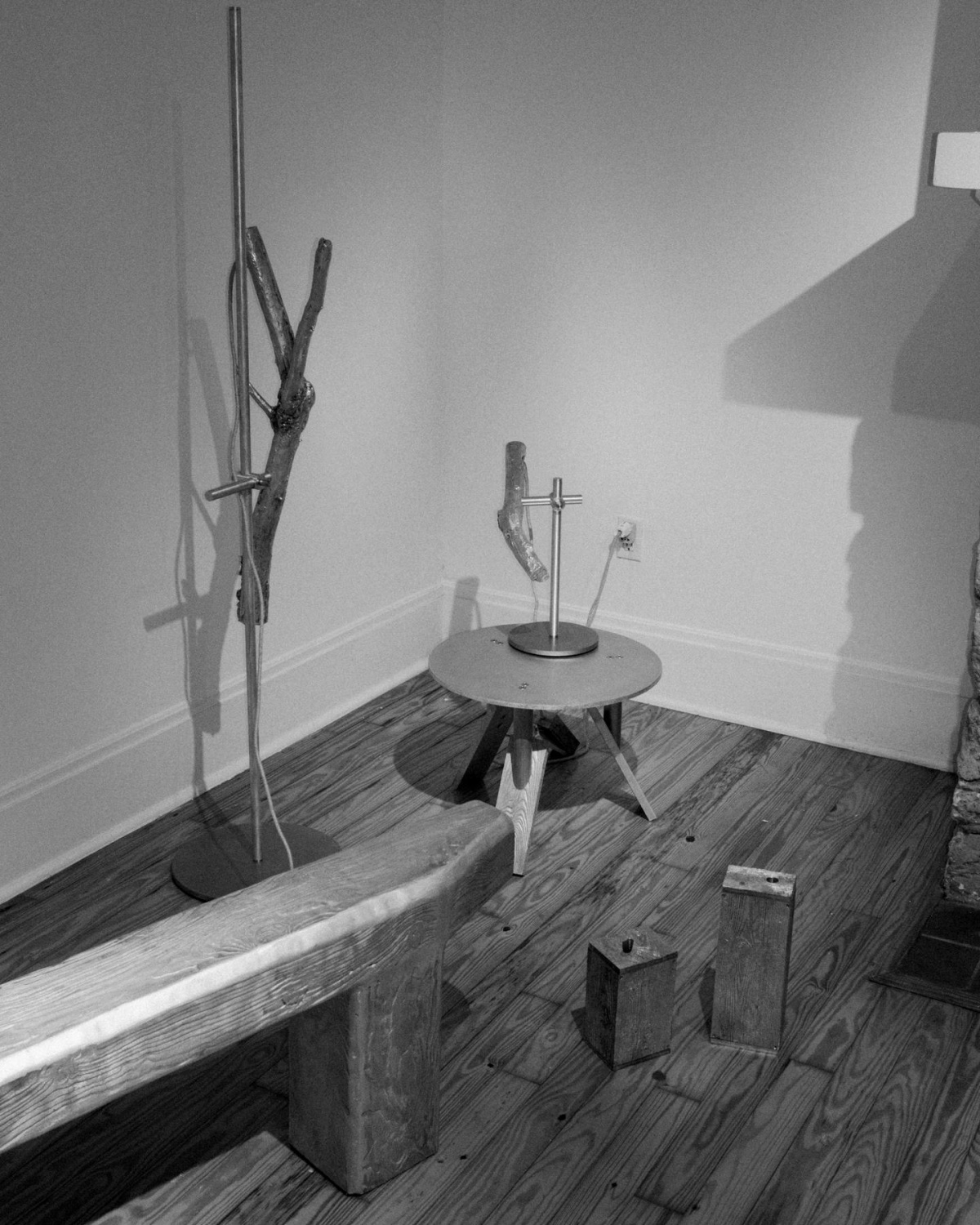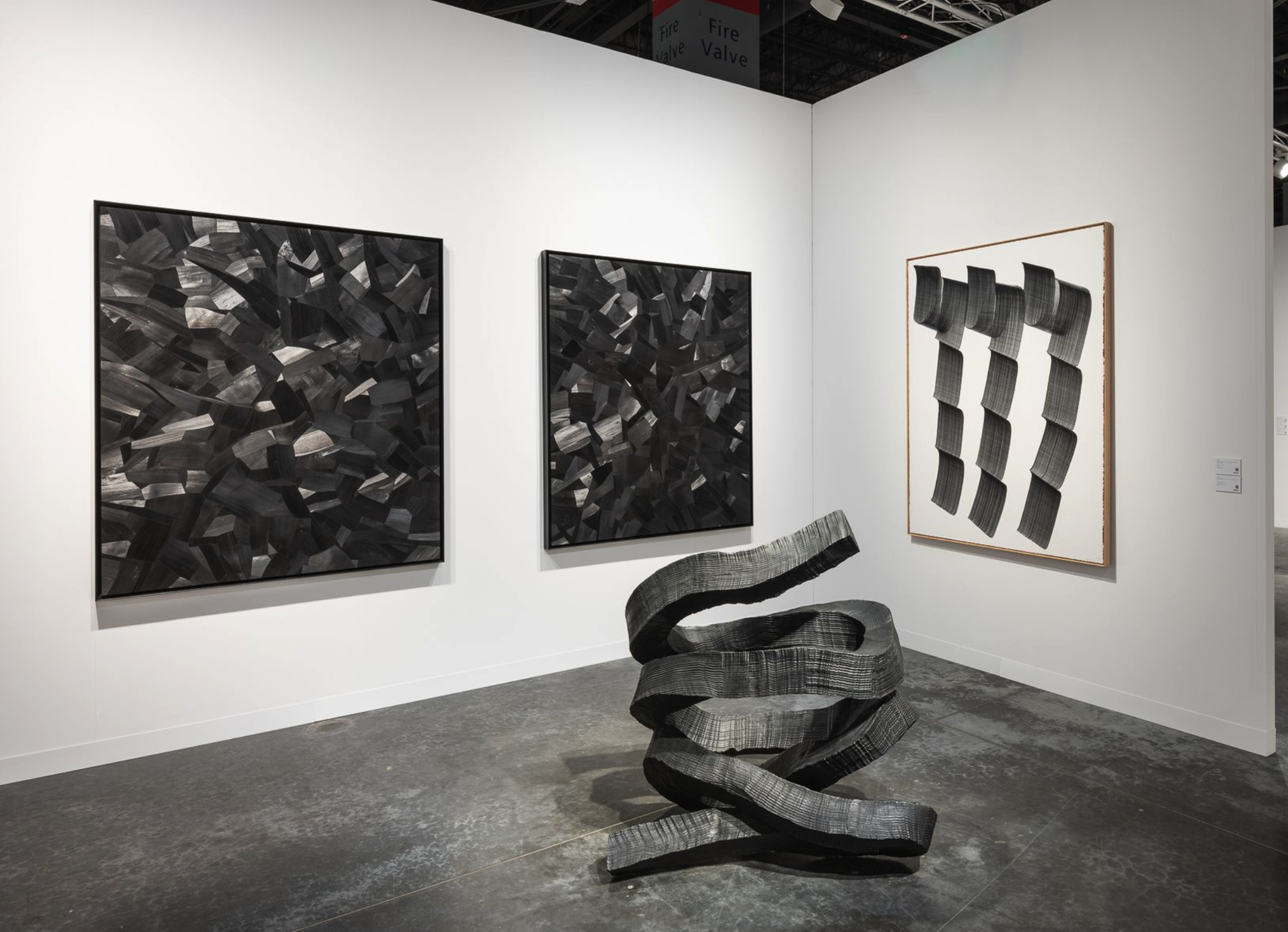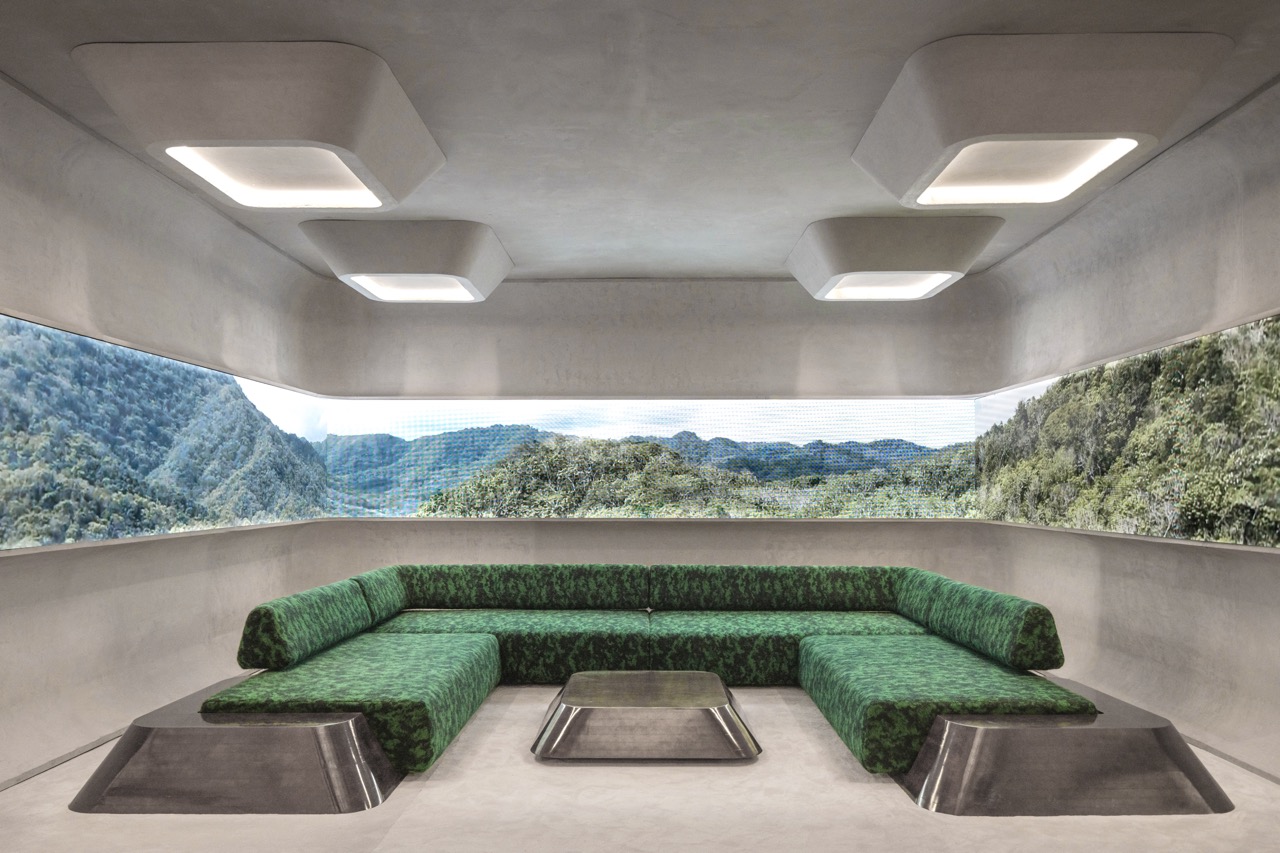Alcova, an itinerant showcase of independent design, hosted forward-thinking contemporary exhibitions in Miami this month for its second international edition. Founded in 2018 by Valentina Ciuffi and Joseph Grima, Alcova has become known for bringing together designers, researchers, and institutions to push the boundaries of innovation in products, materials, and technology.
The event, which first gained global attention during Milan Design Week, transformed the River Inn’s pastel-colored Victorian buildings into a dynamic space for groundbreaking work. Alcova Miami continued its mission to showcase the people shaping design culture today, offering a window into the future of how we live and create.
Here are some of the standout works from this year’s event.
Bucktron’s Jon Buck is all about letting materials and processes lead the way. His approach is intuitive and organic, allowing ideas to unfold naturally as he experiments with form, balance, and shape. His latest piece, a welcoming table inspired by sketches from his children (left), has blossomed into a character-filled object that blends form and playful discovery.
Ananas Ananas is a food-art studio founded by Verónica González and Elena Petrossian, redefining how we experience food. Their edible installations and experimental tableware transform dining into a multi-sensory, deeply mindful act. Their work spotlights sustainable food practices and rethinks our relationship with resources.
During Alcova, guests were invited to eat tangerines from motorized, stainless steel vessels (right)—an exploration of the 17,572 gallons of water it takes to produce 200 pounds of fruit. The rotating sculptures shaped by gravity and force echo the studio’s philosophy of respecting raw materials and embracing natural transformation.
bucktron.com, ananasananas.com

Alcova has become known for bringing together designers, researchers, and institutions to push the boundaries of innovation in products, materials, and technology.
Adam Kvaček is a Prague-based object maker and spatial designer. He most often communicates his work through installations, workshops, or objects in combination with other media. Throughout his career, he has had the opportunity to be part of Milan Design Week, Dutch Design Week or Brussel Design September and to collaborate with the Czech Centre New York, the Franz Kafka Society, the Czech National Museum, and the Beautiful Work project.
His project The Paradox of Isoëtes asks if commodifying endangered plants can actually save them. By transforming the rare Isoëtes plant into disposable cutlery Adam flips the script on conservation, exposing the relationship between human consumption and nature.
Panorammma furniture design lab in Mexico City is all about pushing the boundaries of how we interact with functional objects. Designers Maika Palazuelos (above left), Ana Reza, Guillermo Conde, and Jeremi Mrozinski use bold experimentation with materials and forms. They create pieces that aren’t just meant to be used—they’re designed to tell stories and spark new possibilities for living.

A Bronze Sculptural Singing-stone by Panoramma.
Madrid-based designer Lucas Muñoz blends art and design (left), creating work that values local craft and addresses consumption and pollution. His globally recognized projects including awards from Dezeen, FRAME, and the Seoul Design Award, focus on sustainability and material innovation. Lucas and his team improvised their exhibit for Alcova entirely from materials they could find locally. Following on Lucas’ “sound systems” body of work, the space is presided by an exclusive unit that had been locally manufactured and developed for Miami.
Teo Rhe and Sheyang Li’s crafting plastics! studio in Bratislava is redefining sustainable design with biocomposites. Their Collection 14 (right), made from the biodegradable material NUATAN includes stackable stools that release earthy scents, adding a sensory layer often missing in bioplastics. A solar-active bioskin that changes color with UV exposure.
lucasmunoz.com, craftingplastics.com
Jirah Joshua’s design approach is intuitive and conceptual, blending his knowledge of set design to elevate both home and public spaces. His exhibition Room-File strikes a balance between raw vision and technical skill, exploring forms that symbolize a reach toward something higher.
Founded by Anna and Sergii Baierzdorf, Furn Object is a Ukrainian furniture and decor brand that encourages self-expression and comfort offering joyful, playful designs that inspire freedom and help recharge a space.
Furn Object’s exhibition provided a space where you can slow down, reconnect, and find inner peace. Their Echo screen, Valun chair, Liquid rack, and Barvinok table represent resilience, grounding, emotional release, and the ability to transform your environment into a sanctuary for self-reflection and renewal.
Founded by Odin Visser (left) and Charles Gateau, Studio LoopLoop is a research-driven design studio focused on sustainable production techniques. Operating from their workshop in Rotterdam, the team develops para-industrial systems to create custom sustainable materials and objects.
Their collection Dye Dye My Darling features mono-material pieces including vases, a coffee table, and mirrors crafted from plant-dyed anodized aluminum, showcasing delicate colors and patterns from their experimental techniques. The exhibition also included a mini-lab, offering a live glimpse into their ongoing material research and bespoke processes.

Victor Miklos Andersen is an experimental designer and artist known for his work across materials, technology, and exhibitions, including Laguna Antropica at the Venice Art Biennale and Bloko in Copenhagen. Villiam Miklos Andersen, based between Frankfurt and Føllenslev, explores how male-dominated work environments affect personal lives through themes of sensitivity and care.
Growing up in Denmark’s coastal Asnæs, the Andersen brothers’ project Zealand at Alcova draws directly from this environment, reflecting their exploration of identity, nature, and the future of design.
Founders of the studio Objects of Common Interest Eleni Petaloti and Leonidas Trampoukis create art, design, and architecture projects that span from objects to immersive environments. Their work blends materiality, concept, and spatial experiences rooted in the fusion of their Greek and New York backgrounds.
Their latest project draws inspiration from childhood memories viewed through a kaleidoscopic lens. The pavilion’s mirror panels and octagonal shape reflect the evolving nature of memories—blurry, shifting, and unique to each perspective. Using semi-transparent, prismatic objects, the project captures how memories exist in our minds both clear and hazy.
Marco Zelli is a Zurich-based architect and designer whose work explores the balance between permanence and transience. After founding his own practice in 2020, he collaborates with institutions like the Trienal de Lisboa and the Swiss Architecture Museum, and teaches at ETH Zurich.
Nefertiti, first presented at the 2022 Salone del Mobile, is a modular lighting design that can be configured as a shelf, wall, or freestanding piece. Originally titled “When Donald met Jimmy, then Aldo came over,” it was later simplified.
Studio HAOS, founded by Sophie Gelinet and Cedric Gepner in 2017, creates emotionally evocative designs through simplicity and restraint. Based in Lisbon their workshop blends design, prototyping, and production to elevate humble materials.
Room for Reverie is a tranquil space that feels as though the inhabitant has just stepped out, leaving behind a subtle aura. It blurs the boundaries between guest and resident inviting visitors into the quiet mysteries of another’s world.
G. Home design studio led by Haoying Zhang explores the cultural significance of gourds, the first domesticated plant for human use. The studio creates functional objects that honor gourd craftsmanship and the bond between nature and human ingenuity.
The Missing Sherds exhibition reintroduces gourd objects—vessels, lamps, incense holders, and tools—highlighting their historical absence in archaeological records. Using the Japanese Kintsugi technique, the project emphasizes restoration and the value of preserving organic, transient materials.
Sculptor and furniture designer Richard Aybar, the creative force behind RA Workshop, was born in NYC and spent the majority of his childhood in the Dominican Republic. He started his practice in 2019 and is currently based in NYC. He uses rubber, wood, metal and other materials across the scope of his practice. This engagement with materiality is a cornerstone of his work as he navigates the balance between natural and synthetic elements. His display Raworkshop/Rubberworks contained a of series of rubber wares for daily domestic use.
Something Last (right) was curated by Studio/JIALUN XIONG, a multidisciplinary design studio based in Los Angeles that explores ideas of duality and creative restraint in design. Jialun’s approach artfully balances positive and negative space, always considering the relationship between objects and spatial volumes. Stripping design to its shapes, dots, lines, light, and shadows, the exhibition offers a tranquil escape from Miami’s extravagance. Hypnotic geometric patterns and rhythmic lines are seen across furnishings, lighting, vases, and wall hangings.
instagram.com/r.a.workshop, jialunxiong.com
Studio TOOJ, founded by Johan Wilén and Ashley Chong, blends art and design to reinterpret Scandinavian simplicity. Their debut at Alcova Milan 2024 earned the duo recognition in Architectural Digest, Elle Decor, and Dezeen.
The studio’s collection in Miami celebrates traditional materials while pushing boundaries with innovative collaborations, including ReishiTM mycelium and a 3D-printed sand console table. Their work strikes a balance between the timeless and the future, offering a Scandinavian aesthetic that is both elegant and disruptive.
Leo Lague, a young designer from South Brazil blends history, mythology, and science into his furniture creations. Influenced by his family’s artistic roots and the digital revolution, his work creates pieces that evoke a timeless, suspended quality. His Silver Dreams collection explores memory, time, and the duality between the ancient and modern/sacred and secular. The installation invited viewers to reflect on their own identities and challenge perceptions of self and space.
Puglia Contemporary Land (left) curated by Cristiano Seganfreddo showcases the intersection of Puglian craftsmanship, design, and art. The installation features contemporary furniture by Amura, Vero International, and Da A, alongside ceramics by Fratelli Colì and Antonio Marras, and projects like Enza Fasano’s Terraterra and Le Costantine’s social textile project with Agostino iacurci’s tapestry.
Rest Energy design (right) showcased the Bottom of the Bucket tableware series created by Los Angeles-based designer Caleb Engstrom. Caleb debuted handmade porcelain plates and a small serving tray, each cast from the textured bottoms of mixing buckets and trash cans in his studio. He says the items reflect the concept of using every last bit of what’s available or “scraping the bottom of the bucket.” His Wet Wool chair sits on the left.
instagram.com/seganfreddo, restenergy.us
Made by ASTRONAUTS studio (left), founded by Danae Dasyra and Joe Bradford, creates limited-edition objects that subvert traditional manufacturing through sculptural design. Their collaboration with SERAPIS for Alcova titled HYBRIS ASTERN blends metal and textiles and draws from maritime mythologies. The collection includes the Scylla and Charybdis chairs crafted via hydroforming, and textile pieces using recycled materials.
Istituto Europeo di Design (IED) blends a global perspective with Italian cultural roots offering an educational model that pairs theory with hands-on practice. Focused on preparing students to lead in the present, IED fosters an inclusive, transdisciplinary approach to design as a tool for change. The institution’s exhibition at Alcova (right) presented student and alumni projects that explored new ways to engage with domestic objects, from sustainable production to sensory experiences.


